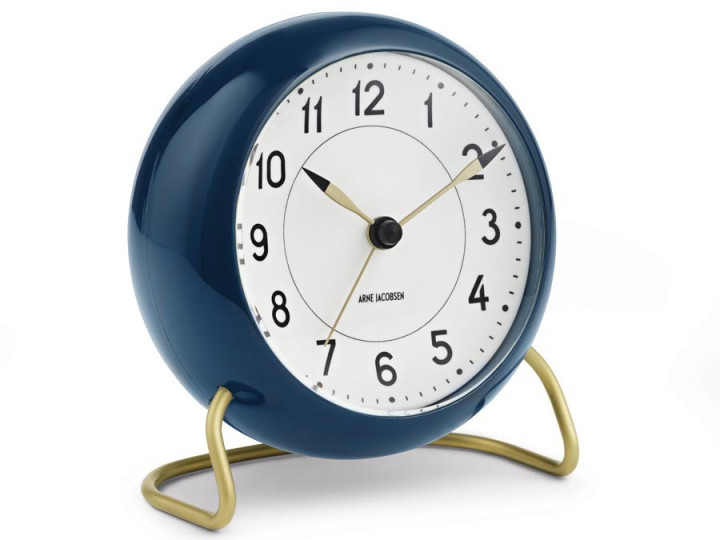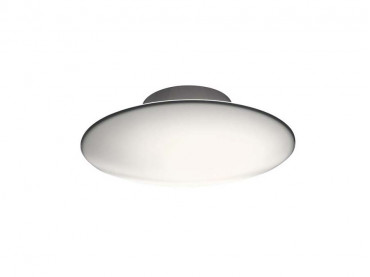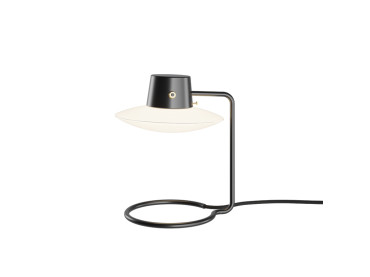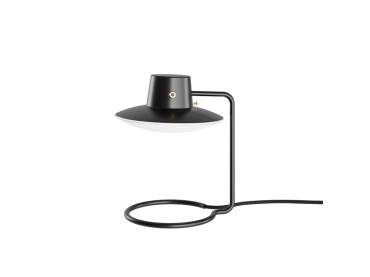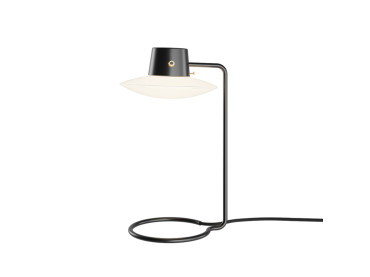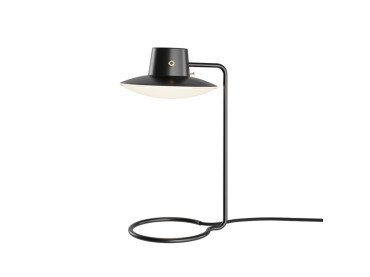Arne Jacobsen Station Table Clock - petrol/white
-
Arne Jacobsen
- RO035 Delivery : 1 to 2 weeks
Arne Jacobsen Station Table Clock - petrol/white Arne Jacobsen’s petrol-blue Station table clock is ideal as an alarm clock with useful detailing in a calm bedroom, as a colourful element in the bathroom or as a stylish detail in a bookcase in the living room. With its classic styling, the clock makes an ideal gift for all design aficionados. Arne Jacobsen created the Station table clock in 1939 in connection with a project for the electrical goods manufacturer LK. Since then, the table clock – with reference to the original drawings – has been updated to bring it in line with today’s standards for alarm clocks. Accordingly, the clock has a light and a snooze function, both controlled touch-free thanks to an invisible sensor at the top of the clock.
| Year | 1939 |
| Dimensions | Width 6.7 cm. Height 12 cm. Depth 11.3 cm |
| Material | Crack resistant lens, case in ABS. |
| Style | Classique Neuf |
| Origin | Denmark |
Arne Jacobsen
Denmark (1902-1971)
Arne Jacobsen trained at the Technical School and continued his training at The Royal Danish Academy of Fine Arts’ School of Architecture, graduating in 1927. He was employed with the city architect in Copenhagen 1927-29 and then established his own design practice. 1956-65 he was a professor at The Royal Danish Academy of Fine Arts’ School of Architecture. Arne Jacobsen worked as an architect and designer.
During his education at the School of Architecture he was influenced by neo-classicism, but around 1930 he helped introduce functionalism in Denmark. Inspired by international functionalism, he in the following years designed the white housing estate Bellavista in Klampenborg (1934), the town halls inAarhus (1942) and Rødovre (1956), SAS Royal Hotel in Copenhagen (1960) and St. Catherine’s College in Oxford (1964). Jacobsen believed that each element of a house should be shaped by the architect. This is why most of his furniture was developed in connection with particular building projects. The three-legged stacking chair, the Ant, from 1952 (RP00619) was designed for the new small Danish dining kitchens and was simultaneously also used in canteens, the first time in the pharmaceutical factory Novo’s canteen. The Ant, a stacking chair in moulded veneer, was Denmark’s first actual industrially produced chair and soon had four-legged follow-ups such as the 7 and the Seagull (RP03214).
For SAS Royal Hotel he designed the organically shaped foam plastic chairs the Egg, the Swan (RP00128) and the Drop (RP01005), and for the teachers’ table in the dining room at St. Catherine’s College, the monumental Oxford chair (RP02993).
Arne Jacobsen is one of his generations’ great architects and the sculptural chair the Ant, the Egg and the Swan put him on the map as a world-class designer.

